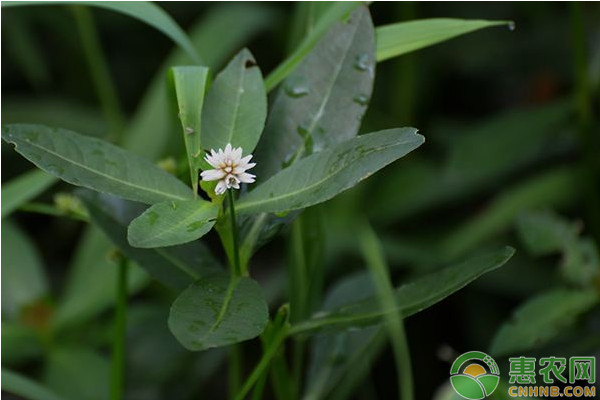Simple bamboo frame greenhouse, bitter gourd, leeks cultivation technique
At present, the intercropping model is very popular in many rural areas. Today, it is necessary to learn to use the simple bamboo frame greenhouse bitter melon to grow the spinach. This is widely used in the Yangtze River basin. It has simple operation and low cost. It can pick bitter gourd and chives at the same time. Features. Let's take a look at the main technical features below. 1 Construction of a simple bamboo frame greenhouse The simple bamboo frame greenhouse has a wide range of applications in vegetable cultivation in the Yangtze River Basin. The scaffolding consists of columns, tie rods, arches, and pressure bars. The span of the greenhouse is generally 4m, 25 to 40m long, and 2m high. The roof of the shed is long curved, and it is made up of bamboo with a width of about 8cm and a spacing of about 1m. The column is made of old bamboo with a diameter of about 10cm, and the column is separated by 2m. The two ends of the greenhouse are supported by arches to enhance the wind and pressure resistance of the greenhouse, and then the membrane is pressed to a pressure of 6.5m. The film tape can be. 2 variety selection Bitter melon should choose varieties with early maturity, low temperature and low light resistance, strong resistance and high yield, such as Chuntai bitter gourd, Chunshuai bitter gourd, etc.; pickles should be selected, such as Thai willow leaf spinach, Ji'an big leaf amaranth. 3 Site preparation Before the soil is plowed after the harvest of the former crops, the lime is sprayed with 1500~2250kg/hm2 for soil disinfection. After the soil is tilled, the cake fertilizer is 1500~2250kg/hm2, the commercial organic fertilizer is 7500kg/hm 2 , the potassium sulfate type compound fertilizer is 750kg/hm 2 , and the calcium magnesium phosphate fertilizer is 750 kg/hm 2 . Mix the fertilizer with the soil, and then carry out the soil preparation for the hoe. Each simple bamboo frame shed is made of 4 pieces, the shed is covered with 60cm for the shovel, 2 pieces are used for planting the bitter gourd, and the silver and black two-color mulch is covered; The ditch is 1.4 m. It is used to spread amaranth. The ditch is 40 cm wide and the ditch is 20 cm deep. The bracts are slightly turtle-shaped. 4 Cultivation techniques 4.1 Bitter gourd cultivation techniques 4.1.1 Seeding and seedling raising Generally, in early February, the small arch shed + mulching is used to cover the seedlings in the greenhouse. The seed amount is about 3 kg/hm 2 , and it is generally soaked in warm water of 50-55 ° C before sowing. After cooling, continue to soak for 4-6 h. It absorbs water and swells to promote germination. After soaking seeds, it is germinated at a temperature of 30 ° C, and the seeds can be sown when exposed. Firstly, the 32-hole trays are placed on the seedbed and placed on the seedbed. The bottom water is poured, then the holes are sown, and 1 seed is sown per hole. The mulch is covered immediately after the substrate is covered, and the small arch shed is used to keep the bed warm. Around 25 °C. When the seedlings begin to arch, the mulch is uncovered, and the seedlings are ready to be planted in the greenhouse when the leaves are fully unfolded. Pay attention to ventilation and water control after emergence, to prevent the occurrence of "high seedlings". 4.1.2 Colonization The transplanting of seedlings is generally carried out in the middle of March in the middle of the afternoon. The simple bamboo racks are planted in two rows next to the greenhouse. The distance between the two is about 50 cm, and the planting is about 4 500 plants/hm 2 . After planting, the root water is poured in time. After the survival, roots were used to root the roots to prevent root-knot nematode disease, and then the holes were fixed with soil and fertilizer. When the temperature in the shed is low, the small arch shed should be covered to promote rooting and seedling growth. 4.1.3 Field Management After planting, the small arch shed is insulated and moisturized to promote the survival of the seedlings, and the early growth is fast. When the temperature rises quickly on the sunny day, it is necessary to open the small arch shed and the greenhouse to prevent the burning of the seedlings according to the actual situation. When the vine is about 1 m long, remove the small arch shed and remove the shed film, shed the shed on the shed, and hang the 20 cm × 20 cm truss net and smear the side branches below 1 m. Properly keep the above several side branches evenly distributed on the greenhouse scaffolding. Due to the low temperature in the early stage and the low insect activity, artificially assisted pollination can be used to pruning and cultivating the melons before 9:00 every day to promote the growth of bitter gourd. Bitter gourd needs big fat water. Generally, every time one fruit is harvested, the fertilizer is applied once, and the application is carried out by applying fertilizer. The application concentration is about 0.2% to 0.3%. 4.1.4 Pest Control The diseases of bitter gourd mainly include downy mildew, blight, blight, powdery mildew and the like. Diseases, downy mildew, and powdery mildew are controlled by spray, killing, azoxystrobin, azoxystrobin, etc.; wilt is treated with carbendazim or carbaryl, and root-knot nematode is rooted in the root line. Implantation prevention after colonization. Insect pests mainly include aphids, melons and melon flies, and aphids can be controlled by imidacloprid or Dagongchen spray; melons can be sprayed with avermectin or cypermethrin emulsifiable concentrate; melon flies can be sprayed on sticky sheets or on sticky boards. Reiter conducts trapping and prevention. 4.1.5 Timely harvesting Bitter gourd can be harvested in late April. When the fruit is full of tumors, the skin is shiny, and the color of the fruit is light, it can be harvested. It will be parked in early July. 4.2 Amaranth cultivation techniques 4.2.1 Germination sowing Usually planted in early February. Before sowing, soak the seeds with warm water of about 50 °C for 0.5h, then soak them in water for 1d, pick them up and wash them at a temperature of about 25 °C. Keep the seeds moist during the germination. Rinse the seeds once a day with water. When 50% to 60% of the seeds are white, they can be sown. The seed amount is about 30kg/hm2, and the seeds of the germination are spread evenly on the two rafts in the middle of the greenhouse, and then covered with a thin layer of substrate to cover the seeds completely, and the water is poured into the surface. After the water is covered with a film, and covered with a small arch shed for heat preservation, the mulch film is removed after emergence, and the small arch shed is removed when the climate rises. 4.2.2 Field Management Amaranth is a warm vegetable, sensitive to the ambient temperature, suitable growth temperature is 15 ~ 35 ° C, so should be sealed in a greenhouse after sowing, to ensure that the temperature inside the shed is higher than 15 ° C, otherwise it will cause freezing damage. At the same time, when the sun is sufficient and the temperature is high, the ventilation should be strengthened to avoid the temperature in the greenhouse being higher than 35 °C to prevent the plants from being diseased, so as to maintain the vigorous growth of the plants and increase the yield. The demand for leek is also relatively large. In addition to the application of the base fertilizer, it is necessary to apply it in time, but it is necessary to pay attention to controlling the concentration to prevent the occurrence of fertilizer damage. Generally, the compound fertilizer is applied for about 75kg/hm2. 4.2.3 Pest Control The main diseases of amaranth are rickets and stem rots, which are generally controlled by scorpion venom or dysentery; the main pests are mites and red spiders, which can be controlled by gram. 4.2.4 Timely harvesting Generally, 35 to 45 days after sowing, when the leek grows to 12 to 15 cm, it can be harvested. When the plant height is 18~24 cm, the seedlings can be listed and released, and the remaining seedlings can be harvested and listed several times. When the seedling grows to a height of 30 cm, the first picking is carried out, the first picking stem leaves two stem sections, the second picking removes the second section of the stem, and the third picking leaves the stem base The first stem is taken down to achieve the purpose of re-germination of the base of the stem. When picking, apply hand picking, avoid using irons such as knives, and prevent rust on the knife edge. 5 Benefit Analysis Simple bamboo frame greenhouses have low cost, and many areas can be taken locally, which can effectively reduce production costs. Through the cultivation mode of bitter gourd interplanting amaranth, the yield of bitter gourd can reach 60 000 kg/hm 2 , and the average selling price is 2 yuan/kg; the amaranth usually goes to the end of May, the yield can reach 30 000 kg/hm 2 , the average selling price 4 yuan / kg, the total output value can reach 240,000 yuan / hm2. The economic benefits are considerable and have good promotion value. For the wonderful pictures and popular comments about bitter gourd interplanting amaranth, you may be interested in the following recommended content, welcome to read.
Quick-frozen sweet corn is a way to preserve corn, mainly by refrigerating it to protect the rich nutrition, sweetness, freshness and crispness of corn. Quick-frozen Sweet Corn Kernels contain a large amount of vitamin E, which has the functions of promoting cell division, delaying cell aging, lowering serum cholesterol, preventing skin lesions, and reducing the symptoms of arteriosclerosis and brain function decline. Vitamin A in fresh corn also has auxiliary effects on preventing and treating common dry eye, bronchitis, dry skin and nerve paralysis in middle-aged and elderly people. Lysine rich in fresh corn (very little in dry corn) is an essential nutrient for the human body. Studies have found that eating more quick-frozen sweet Corn Kernels can also inhibit the side effects of cancer drugs on the human body.
IQF Corn Kernels,IQF Corn,IQF Corn Kernel,Frozen Sweet Corn Kernel Yomifresh , https://www.yomifresh.com
.jpg)
.jpg)
